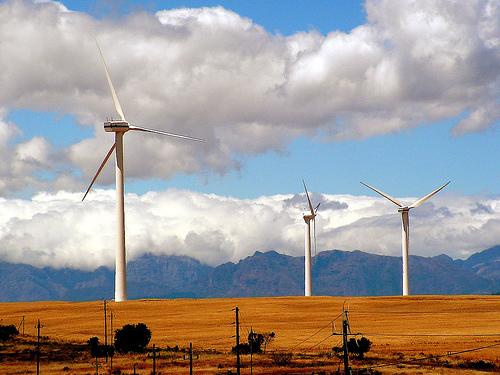Renewable energy is sustainable. Unlike fossil fuels–which are dwindling resources that can’t be replaced–renewable energy comes from such infinite sources as the sun, earth and wind. Renewable energy is free from many of the negative environmental impacts caused by fossil fuels—namely, global warming and water pollution.
Plus, renewable energy is the wave of the future. According to the US Department of Energy, the world’s available fossil fuels will be consumed in 104 years if there isn’t a global switch to renewable energy. This is a switch the world has to make. Many people are already going green with renewable energy in their homes and their lifestyles.
Types
Hydrogen is the most abundant element in the universe and can be used as a power source for fuel cells and to generate heat and electricity.
Flowing water creates energy, call hydropower, that can be trapped and turned into electricity. The ocean also produces usable energy from tides and waves.
Many people are familiar with solar energy, which is tapped from the sun and used to heat homes and generate electricity.
Biomass is the product of organic matter and can be made into biofuels (like biodiesel and ethanol) and bioproducts (which can make plastics and antifreeze).
Wind energy is tapped through wind turbines and windmills and converted into electricity.
Even the earth itself is a source of energy, known as geothermal energy. The earth gives off heat that can be pumped out and used to heat and cool homes.
Function
Many new homes built today are designed to optimize energy efficiency. However, renewable energy isn’t just reserved for new homes—older homes can incorporate these newer technologies, too. Many people in the US can purchase “green power” directly from the supplier. Some utility companies offer electricity produced by the wind, sun or biomass.
The other way to green your home is to produce the energy right at your doorstep. For example, solar electricity can be bought as a utility or produced at a home using photovoltaic (PV) cells. A microhydropower system can be used to generate electricity if you have flowing water on your land.
You can make drastic changes, like replacing your current heating and cooling system with something more sustainable, or smaller changes, like burning pellet fuels—made from recycled materials—rather than regular wood.
Benefits
Besides being better for the environment, sustainable energy creates local jobs that strengthens the national economy. Unlike with many fossil fuels, the US can harvest much of the energy within the country’s borders, allowing the country to become sustainable in more ways than one.
Considerations
Using renewable energy will make you feel good and may save you money. You might qualify for tax credits if you’re building a new home and have installed geothermal heat pumps, small wind energy systems, fuel cells, photovoltaics, and solar water heaters.
Geography
Some regions of the US are more limited in their choice of renewable energy options than others. Obviously, Arizona is better-off utilizing active solar energy than Washington. Besides for weather differences, some regions are simply more advanced with renewable technologies than others. In Oregon, for example, residents can find biofuel stations and a host of green utility companies offering renewable sources of electricity in heat.





